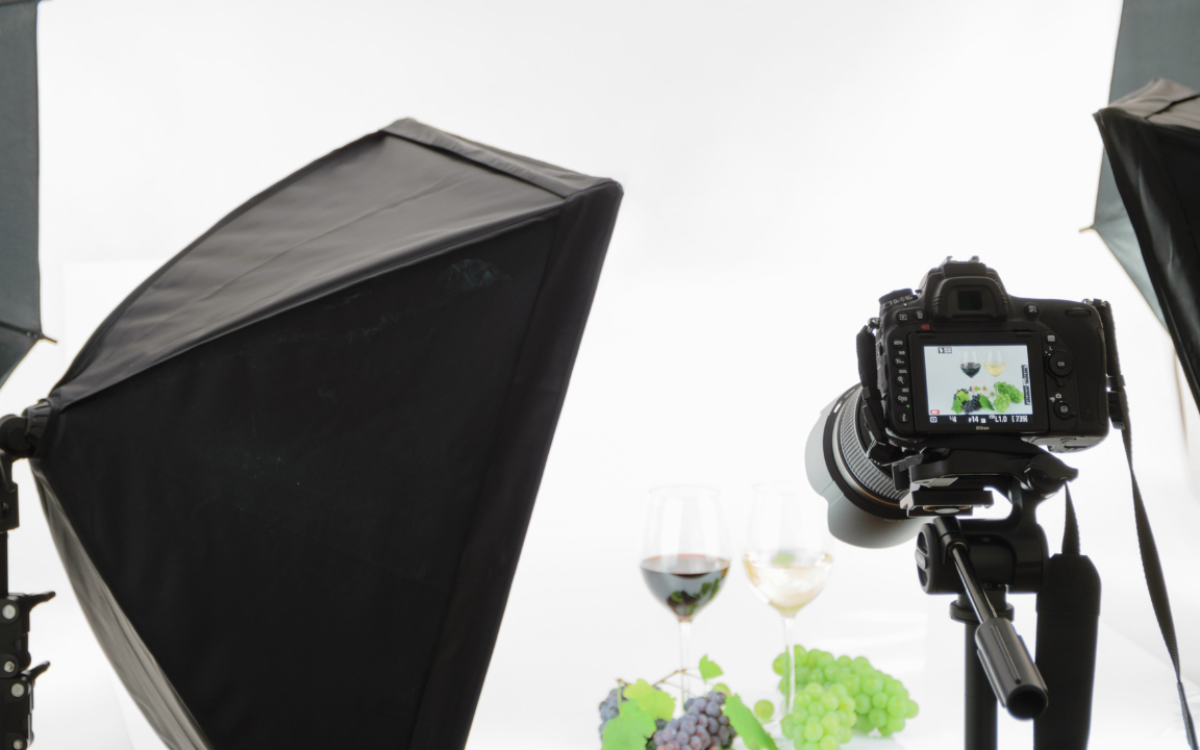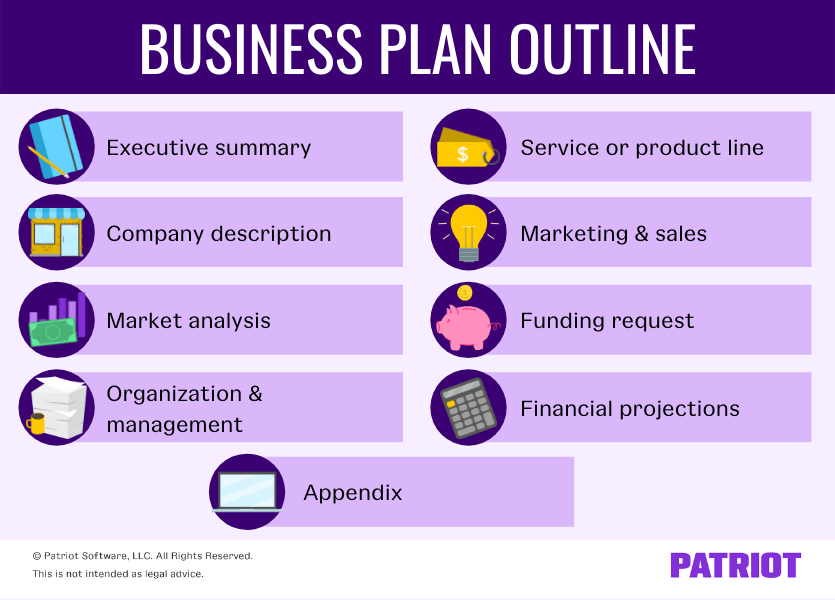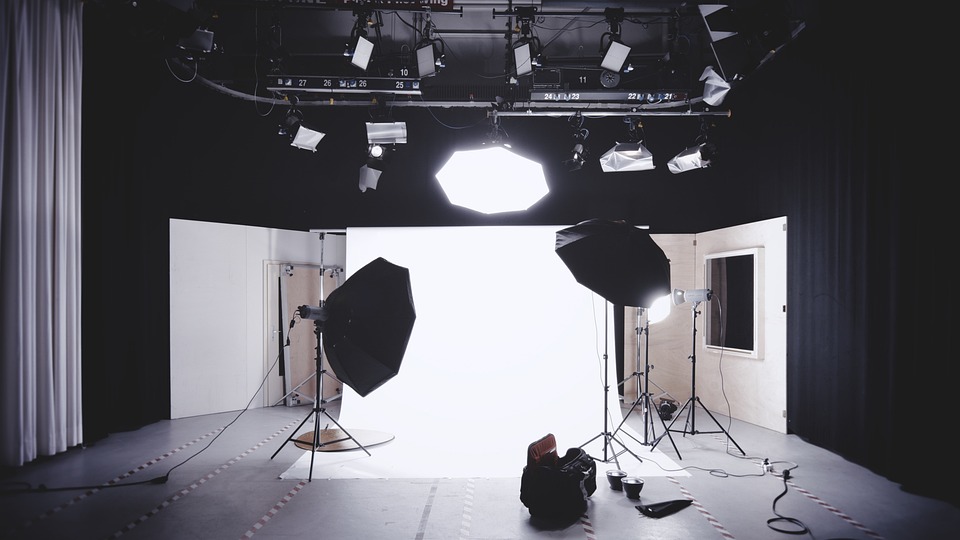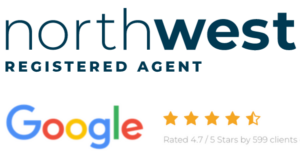How to Start a Photography Business & Market It For Success in 8 Simple Steps

When you buy something through one of the links on our site, we may earn an affiliate commission.
If you're looking for a blueprint on how to start a photography business, you've come to the right place.
This post will walk you through the process. We’ll answer all your questions about the kind of professional photographer you want to become.
More importantly, we'll guide you on developing, registering, and marketing your photography business.
These are arguably more important factors you must consider as a photographer.
It's one thing to possess the skills to take beautiful photos. It's another to have business skills for keeping your practice afloat and profit from your passion for photography.
You'll learn all these in this post and more, so let's get started!
Contents
- Step 1: Identify The Photography Service Type You Want To Offer
- Step 2: Create a Business Plan
- Step 3: Come Up with a Business Name
- Step 4: Decide on a Business Structure
- Step 5: Register Your Photography Business
- Step 6: Identify Photography Equipment You Need
- Step 7: Create a Website
- Step 8: Promote Your Photography Business
- Conclusion
Step 1: Identify The Photography Service Type You Want To Offer
Firstly, know what kind of photographer you want to be.
This is one of the first matters you must figure out before diving into a photography business. If not, you will get confused and discouraged.

That said, below are the different services professional photographers provide.
Event Photography Business
Event photography is about capturing the things that happen in gatherings.
Furthermore, you can also load photographs in a gallery. Then, let event attendees view your collection. If they see something they like, they can pay you in exchange.
It’s the service to provide on these occasions:
- Birthday parties
- Anniversaries
- Corporate retreats
- Family and high school reunion
Wedding Photography Business
This type of event photography service deserves its own spot on this list due to its popularity.
Despite the expected drop in weddings due to the pandemic, it has rebounded nicely. 2022 expects to have 2.47 million weddings—the highest number ever!
Wedding photographers document the events before, during, and after the wedding. Their goal is to convey the emotions of love that led to the ceremony.
As a wedding photographer, you are also responsible for printing and preparing albums and files for clients (and you may want to check out our list of the best wedding website builders to help attract customers).
Fashion Photography Business
The focus areas of fashion photography are lighting, posing, and clothing. Sometimes, it also has to do with a breathtaking view.
A fashion photography business involves two people: one who captures the photos and one who provides a creative direction.
That is to say that they're about using their knowledge of lighting and a detail-oriented approach.
If major brands come to you, a fashion photography business can be a lucrative source of income.
Food Photography Business
Food photography is about creating still-life images of what you eat and drink. It falls under commercial photography.
Moreover, professional food photography isn’t a one-person business venture. Presenting high-quality quality stills is a collaborative effort. Apart from the artist taking images, it involves an art director and a food stylist.
If you have a food photography business, you can provide services for:
- Magazines
- Advertisements
- Cookbooks
- Menus
- Restaurant packaging
If this interests you at all but perhaps you're interested in learning some best practices to save you time and money from learning through trial and error we highly recommend Foodtography School.
It's been highly touted by Stephanie Rutherford and others as being extremely helpful with improving their food photography.
Portrait Photography Business
A photography business that specializes in portraits is about providing photos of individuals.
The idea is to capture the unique features and beauty. Then, allow others to show better appreciation for them.
Portrait photographers make money with their skills by providing services for:
- Family portraits
- Holiday greeting cards
- Company profile pictures
- School photos
- Personal artwork
Product Photography Business
Yes — you can take images of items anywhere. But, for the best results, go to a product photography business.
The reason? Product photographers can gain more clients from their work if their photos are in a studio. If their work shows the results of enough lighting and good angles, they can make more money.
If they take exceptional images, they can use their work for commercial purposes.
Real Estate Photography Business
A real estate photography business is about taking good photos of properties. Particularly, it's about taking photos of residential and commercial properties.
The goal is to attract potential buyers. Then, encourage them to view the listing.
Moreover, real estate photographers are in high demand. Which has to do with the competitive nature of real estate.
The more attractive the photos are, the more valuable they are to real estate agents. And the higher the fees you can charge.
Sports Photography Business
A sports photography business involves capturing high-quality images during sporting events. These include snaps of victories, losses, fans, items used, and athletes.
What makes professional sports photographers unique? Their ability to capture clear photos of action and movement.
I mean have you tried taking pictures at a sporting event?
If yes then you understand the challenge of getting a decent shot of a moving object.
Travel Photography Business
Starting a travel photography business is the most logical step if you love taking pictures of places in all their glory.
The idea is to capture the beauty of a place. Then, you can sell your work to interested parties. It includes print magazines, travel blogs, and frame printing companies.
As a travel photographer, you’ll need to travel to different regions. So of course, you'll stay in different lodging and probably need to familiarize yourself with their various customs.
Step 2: Create a Business Plan
A business plan can ensure your business will go in a controllable direction.

Here's what your photography business plan should contain:
- Executive summary - Prepare a short report that details everything about your business.
- Company description - Describe your business — what it does, and what you want to achieve.
- Market analysis - Provide an overview of the market. After detailing a generic description, go into a more in-depth statement of the market concerning your business.
- Organization and management - Discuss the structure of your business. Lay out a description of the people involved — and their roles and responsibilities.
- Service or product line - Plan the interconnection of your services or products. The idea is to promote customer engagement.
- Marketing and sales - Have a marketing strategy and create a realistic outline of how you plan to reach your target market. You need to get through to your customers to have a business.
- Funding request - Outline the future funding requirements of your business.
- Financial projections - Show authorities your strategy for earning and repaying loans. It includes outlays, cash inflows, income, and balance sheets.
- Appendix - Wrap up your business plan. Provide a supplementary section that provides extra information and validation.
Step 3: Come Up with a Business Name
Have a business name from the get-go. It’ll help you with your vision. It’ll also help you brand your business and give you a solid brand identity.
Here are ways to brainstorm business names for your photography services:
- Play with foreign languages - Use a word with a significant meaning. For example, go with the word fotografo — meaning photographer in Portuguese.
- Match your audience - Learn more about your target audience. Then, choose a relatable name.
- Ask for feedback - Make a list of 20 people. Then, let them share their thoughts.
You should take a look at our article about photography business name ideas for more inspiration and tips. And once you have a name in mind, find a great tagline from our list of ideas for photography business slogans.
And, of course, make sure that the name hasn't been copyrighted and that the domain name is available, as well as the social channels you'll use to promote your photography business.
Step 4: Decide on a Business Structure
A business plan can help determine why you’re starting a business. And a business structure can help you understand who can help and how you’re about to achieve your mission.
Firstly, figure out if your business is a sole proprietorship or corporation.
Sole Proprietorship vs. Corporation

A sole proprietorship allows you to set up your business fast.
Moreover, you can also enjoy zero payroll taxes and less maintenance. There's also less Internal Revenue Services (IRS) scrutiny and worldwide availability.
Meanwhile, you’ll be on a tight leash. If you want to be a corporation, prepare for this.
Setting up your business can be harder, too. You have to worry about maintenance, payroll taxes, and IRS scrutiny. Plus, there's limited availability (only for US residents and citizens).
When Should I Be a Sole Proprietor or a Corporation?
What you choose is 100% up to you.
If you want to become a sole proprietor, you’re the boss and you'll keep 100% of the profits.
It’s an ideal choice if you enjoy a self-fulfilling business. If you want to do things independently and own all the liabilities, it’s for you.
But if you don’t want to do everything independently, you’re better off becoming a corporation. While you may need to share profits with essential people in your business, you can rest assured that you’re not the only one liable in case things go south.
And if you need help, you can refer to Northwest Registered Agent to help you — a registered agent service that provides a corporate guide service to handle the process for you.
Taxes and Liability
Even if your photography business doesn’t generate as much income as desired, you still need to pay taxes. If it’s not your primary income source, it doesn’t matter — you still have to pay taxes.
The government may penalize you and dissolve your business if you don't.
Besides, paying taxes can be rewarding. It grants you peace of mind knowing you’re not performing illegal activities.
Below are ways to address tax liabilities:
- Collect tax deductions - Learn about tax deductibles—capital expenses, venue costs, and more. Then, use them to reduce the amount you’ll pay when filing.
- Set aside money for taxes - For every product or service you provide, allot a percentage to go to taxes. Think of it as “a cost of doing business.”
- Manage expenses - Use a system to help you organize tax-related activities. You can use studio management programs to help you with invoices, bookkeeping, and accounting.
Step 5: Register Your Photography Business
A crucial first step for your photography business to succeed is to let people know it exists. To do that, you need to promote it.
But, first, you should register it. It's a simple way of preventing other people from using it or claiming it as their own.
Below are the requirements you must submit as part of the registration process.
Bank Account
Open a bank account for your business. Not only will it make you appear more professional as a photographer. But it can also help you manage and organize your finances.
Furthermore, using a personal bank account isn’t ideal. It can complicate your financial operations. And if the IRS or creditors will check up on you, you may have trouble because of privacy concerns.
Business Permit and License
A business permit and license serve as documents describing your operations' legality. They can help you score potential clients because people want to work with legal businesses.
Additionally, permit and license applications may differ from state to state. But they can help you with your business goals. They can also encourage you to follow government rules and regulations.
To get a permit and license, go to a licensing agency. This agency has to be near where you plan to operate and apply. You can also approach a reputable licensing service provider for help.
Business Insurance
Your photography business can benefit from insurance by covering emergency expenses. With it, you can continue your operations even if something unexpected happens.
To get it, look into the business insurance providers near you. Then, review the insurance types they offer.
Furthermore, check if they provide coverage for general liability and business income. And if so, go with those options.
Step 6: Identify Photography Equipment You Need
First, you should have the right equipment for the photography service you want. It can be challenging to provide high-quality services to clients without your stuff.
Moreover, you’ll be out of tune and can’t outperform competitors. If you don’t invest in essential items, that is.
The solution? You can upgrade your existing equipment or buy new ones.
Computer
Buy a desktop computer or laptop for photo editing. While any reliable computer will do, it’s best to go with a high-end PC. It will help avoid system lags and poor-quality photos.

Furthermore, it’s up to you how you want to edit photos. But, most photographers want to use a laptop. It’s more powerful, flexible, and convenient.
The Microsoft Surface Laptop Studio is a good choice for photo editing. It features PixelSense Flow. Above all, it lets you enjoy true-to-life color with a refresh rate of 120 Hz.
Recommended specs and features:
- 16 GB RAM
- 256 GB SSD
- AMD Ryzen 5 (or Intel i5 Core processor)
- 4K display
Photo Editing Software
You also need to invest in photo editing software. Even if you take good photographs, you may still have to spruce them up to produce top-notch results.
Moreover, if you’re a beginner in software, go with a tool you find easy to use. Learn the basics of that program. And soon enough, you can find it less challenging to transition to newer software.
Below is the top photo-editing software we recommend:
- Photoshop - It’s not simple to use. But it is the gold-standard, features AI tools, and has advanced photo editing abilities.
- Adobe Creative Cloud - It has high-level editing functions. Examples are color and level adjustments.
- Cyberlink PowerDirector 365 - This standard program has animation effects. It also comes with powerful AI features.
Power Bars and Extension Cords
It’s handy to have an extension cord in a photography studio. It lets you plug into power outlets in areas without it.
Besides an on/off switch, these devices feature built-in surge protection.
They help keep you safe and increase your confidence in your workplace. They also work with many electrical gears so that you can work without interruption.
A recommended product is the 200-ft cable by Iron Forge. Without a doubt, it's a bit expensive.
But it’s durable, water-resistant, and features reinforced blades. It also works as an all-purpose extension cord.
Extra Batteries, Memory Cards, and Adapters
Not having spare batteries and space in your memory card can be a bummer. Not having a power adapter adds to the problems, too.
So, ensure you invest in these items. In addition, check out the recommended specifications for your product.
Lighting
As you learn how to start a photography business, you'll soon realize that lighting is vital.
Most importantly, it can help you set the tone, mood, and vibe. So, the lighting equipment you should invest in depends on the photography service you want to offer.

Below are the different lightings for photography:
- Beauty dish - A parabolic dish with a light source that draws light on a focal point. Moreover, it’s best for portraits, food, products, and fashion accessories.
- LED lamps - They can help you capture different intensity levels.
- Reflectors - They redirect light away from (or onto) a subject.
- Softboxes and octa boxes - They’re among the significant soft lighting equipment. They diffuse bright light and get rid of shadows.
- Speedlights - They’re flashguns that attach themselves to a camera’s hot shoe. Moreover, you can use them as off-camera flash, and they can serve as mini strobes.
- Studio flash - These are floor-standing lights that illuminate a subject. They work with a camera and will only flash if required.
- Umbrellas - They diffuse bright or harsh light to make photos appear natural.
Backdrop
It’s a background for taking pictures. They come in different styles, colors, and sizes.
Many backdrops are vinyl. The material is flexible and resistant, and it’s also ideal for outdoor settings.
Above all, vinyl allows photographers to provide the most appropriate backdrop for each occasion.
Step 7: Create a Website
Without a site, people can’t look you up. As a result, they can't book you as their photographer—it's simple as that.
And unlike social media, you have complete control over how you can present yourself to your prospects. This allows you to close more deals in the process.
Below are parts of a site every aspiring photographer should look into.
Domain name
A domain name is a string of text that maps to an IP address that lets you access a site.
Sure, you can pick something random for your business. But, more importantly, why not learn how to get the best domain name?
One of the top places where you can buy a domain name is Namecheap.
Not only do they offer affordable domain names. But they also provide more dependable services to help you complete your site.
Hosting
You also need to invest in hosting. This is where you’ll store your site’s files.
When choosing a provider, go with a service that shows reliability. In addition, you may get a good deal if it features an uptime guarantee and offers reasonable prices.
Do you want a platform that checks all the boxes? Then go with Iridium Hosting.
Theme/Design
The theme or site design is how your site will appear to visitors. You want to attract them.
And the solution is to choose something that’s fast-loading, customizable, and clean.
Do you want a theme or site design that can meet your needs? Then, go with GeneratePress or Astra.
Step 8: Promote Your Photography Business
It's not enough to know how to start a photography business. You have to promote it, too.
For example, you can look up photography business owners. Check out how they're promoting their photography businesses.
If their techniques are effective, why not follow their lead?
Below are ways you can promote your site:
- Submit to online directories.
- Join social media groups.
- Reach out to other webmasters and ask about guest posting opportunities.
In addition, it's in your best interest to set up an authoritative site.
Aside from simply setting up your landing pages, the site must have valuable content that ranks on Google for its target keywords.
Do you want to do it right? Then, sign up for the Authority Site System.
The course teaches site owners to generate organic traffic. Then, in short, it talks about how to convert visitors into clients.
Frequently Asked Questions

Get rid of doubts about how to start a photography business.
Below are common frequently asked questions.
How Much Does It Cost to Start a Photography Business?
Prepare approximately $10,000 upfront. But, to clarify, you may need more (or less) ongoing costs.
What Do I Need to Start a Photography Business?
You need to cover the costs of the equipment discussed above. Then, you should have a working knowledge of the photography industry.
How Much Do Photographers Charge?
Photographers charge between $100 and $300 for every hour, depending on various factors. In addition, they can also charge you a per-image rate of $75-350 for every image.
Conclusion
To sum up, learning how to start a photography business is challenging. But it's what owning your own business is all about—it’s no different than learning the ropes of other businesses.
If you love photography, however, then nothing should stop you.
Besides, is there anything better than a business you love?
By taking the photography business step by step, as detailed above, you’ll be able to succeed.
Want to learn step-by-step how I built my Niche Site Empire up to a full-time income?
Yes! I Love to Learn
Learn How I Built My Niche Site Empire to a Full-time Income
- How to Pick the Right Keywords at the START, and avoid the losers
- How to Scale and Outsource 90% of the Work, Allowing Your Empire to GROW Without You
- How to Build a Site That Gets REAL TRAFFIC FROM GOOGLE (every. single. day.)
- Subscribe to the Niche Pursuits Newsletter delivered with value 3X per week
My top recommendations

















